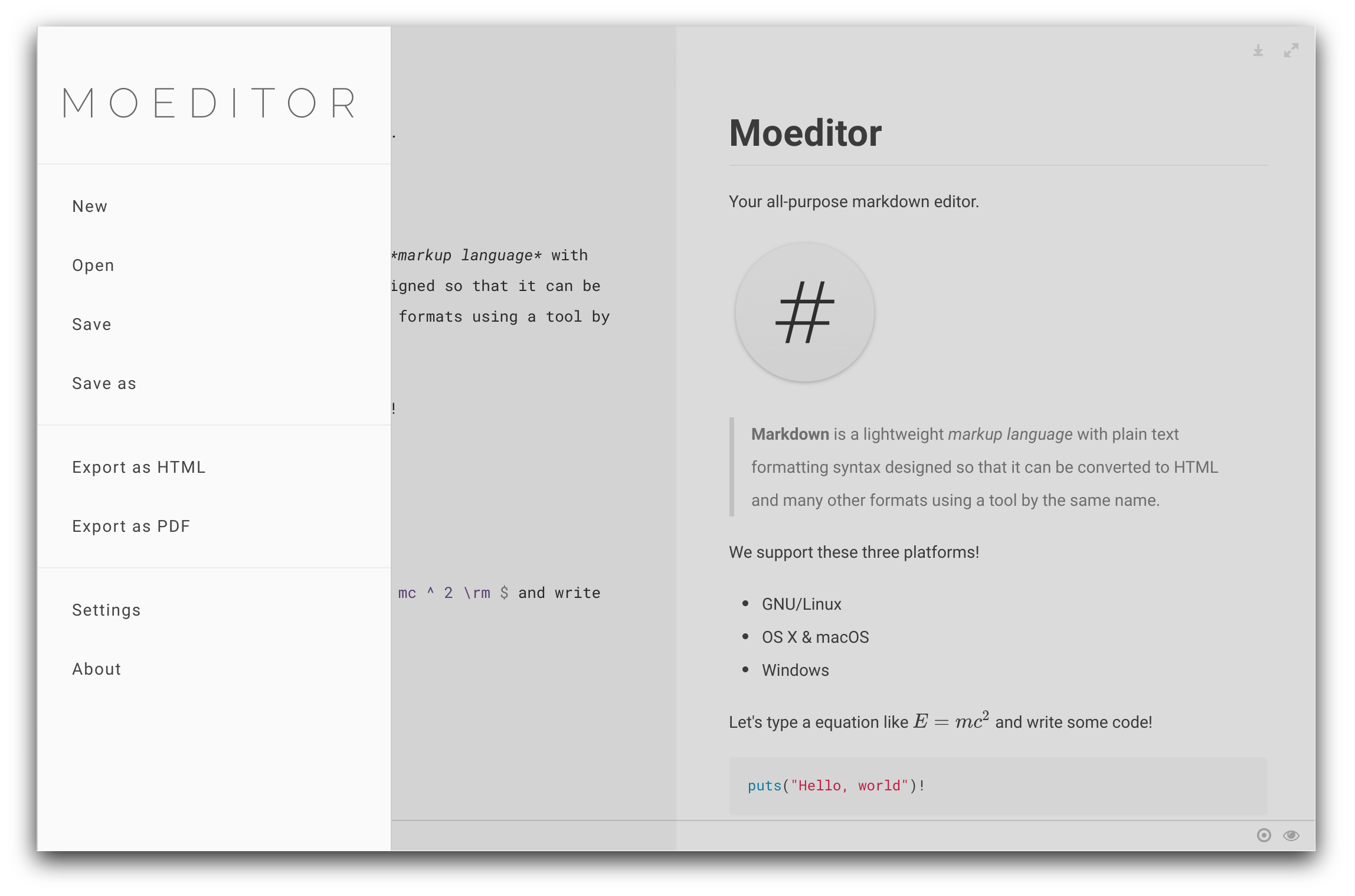
#Macos markdown outliner code
Latex: you can add mathematical notation to Obsidian by enclosing Latex code inside double dollar symbols.Ĭode blocks: code blocks are available and syntax highlighting is supported. Tables, task lists, strikethrough, and footnotes are supported.


For example, **bold** text is created with double asterisks and _italics_ requires double underscores rather than single underscores or asterisks. Like Dynalist and Roam, it’s not quite standard. Markdown: Markdown is supported and displayed in Edit mode but not Preview mode. One use of this is to display the Edit and Preview modes of the same note in two linked panes. Panes can be linked so they scroll together.

Split window: Obsidian allows you to split the window multiple times like in an IDE. Case sensitivity can be turned on and off and operators are available for path, file, tag, line, and section. Search: search looks for notes containing a word or phrase and displays them in the navigation bar and highlights them in the selected note. You can create links to specific blocks or headings using the syntax ]. Each block has an empty line before and after it. Hovering over a note shows you all related notes in purple and clicking on a note takes you there.īlocks: Each page is made up of blocks which may be paragraphs, lists and more. Graph view: this is a graphical representation of the relationships between your notes. It’s also used by plugins to display an outline of your headings, a tag pane, and more. Unlinked references can be changed into links with a single click. Sidebar: the left sidebar displays backlinks and unlinked references. Follow a link by clicking in Preview mode and Command-clicking in Edit mode, and go back with Command + Option + left arrow.Īliases: aliases can be created for each note so that you can link to them using different names. Backlinks are automatically generated and displayed in the sidebar and the context is included. Links are created using either Markdown links or ] according to your choice in the settings. Links and backlinks: links transform individual notes into a network of related ideas. Here are some of the main concepts you need to understand to use Obsidian. I’ve only heard positive things from users who are testing them. There’s currently no web app, and mobile apps are currently in alpha. You choose which mode is active by default.Įlectron-based apps are available for macOS, Windows, and Linux. I guess this makes editing links simpler. Links are clickable in Preview mode, but in Edit mode you need to Command-click. The first hides the markup and displays images, while the second displays the Markdown syntax and the path to the images. The application is modal and offers Preview and Edit modes. But there’s a lot of power under the hood. Many of its more advanced features are turned off by default, making it easier to use for less technical users. They keep my data secure and under my control, and allow me to decide which features I need and which I don’t. Obsidian’s About us page lists three fundamental directions the developers are following with the app:

Your notes are stored locally and can be stored on the cloud using iCloud, Google Drive, GitHub and more. Existing folders of Markdown files can be opened in Obsidian. Obsidian stores its data in folders of Markdown files, so there’s absolutely no lock-in and you can access your notes with any text editor or Markdown app. It’s appreciated for its open architecture, extensibility, code blocks, GitHub integration, Vim key bindings, and configurable hotkeys.
#Macos markdown outliner software
You can really make it your own.ĭevelopers use it as a task manager, a software development knowledge base, and as a repository for notes, ideas and code snippets. I was initially underwhelmed with the application until I discovered the extensive functionality that can be added through plugins. The app’s powerful linking and backlinking features turn these separate files into a knowledge base that operates as your second brain. Obsidian’s data is stored in a local folder of Markdown files. They think of it as “an IDE for your notes.” It lets you turn a collection of plain text files into a rich network of linked thought. Obsidian is a note-taking and knowledge management app by the people who created Dynalist, a popular online outliner and one of my favorite tools.


 0 kommentar(er)
0 kommentar(er)
